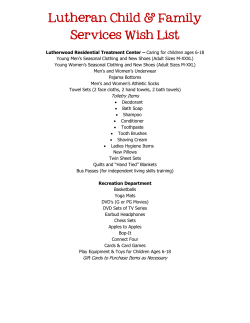
SERIES
SERIES ROUTE 66 4345 As one the longest roads in America, so is this pattern in the series. At 45 feet in length, and as with most long oil patterns, the optimum line is usually one that is closer to the pocket or more towards the inside portion of the lane. The greatest slope of conditioner on the ROUTE 66 is from the 11th board to the 16th board so players should target along this route. Outside of that slope, the pattern is flat so there will be very little room for error. ♫ If you get hip to this tip, take that bowling center trip to get your kicks on ROUTE 66! ♫ Latitude Ratio Coordinates 22’ 4.3 to 1 43’ 2.6 to 1 Longitude Ratio Coordinates Outside Taper 3.4 to 1 Inside Taper 3.2 to 1 Pattern Distance 45 Feet Pattern Volume Forward 10.30 mL Reverse 13.00 mL Total 23.30 mL ROUTE 66 4345 Latitude Ratio Coordinates 22’ 4.3 to 1 43’ 2.6 to 1 The 2D chart on the left was generated by Lane Monitor showing select tapes and ratios at key distances throughout the pattern. USBC Sport Bowling ratios are calculated at 22’ and 2’ before the end of the pattern. All Latitude Ratio Coordinates are calculated from these two distances. Latitude ratios in the last half of the pattern can be an indicator of the difficulty of a pattern. Generally, the lower the ratios down lane, the more difficult the pattern. Longitude Ratio Coordinates Outside Taper 3.4 to 1 Inside Taper 3.2 to 1 The 3D chart below was generated by taking tapes every foot of the pattern. This gives a visual of how the conditioner tapers off from the front to the end of the pattern. ROUTE 66 4345 Kegel Sanction Technology™ Lane Machine Settings Oil per Board (Pump Setting): 50 µL Pattern Distance: 45 feet Forward Settings Screen # Left End of Stream Right End of Stream # Loads or Streams Travel Speed (in/sec) Beginning Distance of Load (feet) Ending Distance of Load (feet) # Boards Crossed per Load Total Boards Crossed Total Volume of Oil (µL) 01F 2 2 3 14.00 0.00 3.90 37 111 5550 02F 12 12 1 14.00 3.90 5.80 17 17 850 03F 13 13 2 18.00 5.80 10.90 15 30 1500 04F 14 14 2 18.00 10.90 16.00 13 26 1300 05F 15 15 2 18.00 16.00 21.10 11 22 1100 06F 2 2 0 18.00 21.10 26.00 07F 2 2 0 26.00 26.00 36.00 08F 2 2 0 30.00 36.00 45.00 206 10.30 # Boards Crossed per Load Total Boards Crossed Total Volume of Oil (µL) 09F Forward Buff Screens: 3 Forward # Boards Crossed | Volume mL Reverse Settings Beginning Distance of Load (feet) Ending Distance of Load (feet) Screen # Left End of Stream Right End of Stream # Loads or Streams Travel Speed (in/sec) 01R 2 2 0 30.00 02R 14 14 2 22.00 36.00 29.80 13 26 1300 03R 13 13 2 18.00 29.80 24.70 15 30 1500 04R 12 12 2 18.00 24.70 19.60 17 34 1700 05R 11 11 2 14.00 19.60 15.70 19 38 1900 06R 10 10 1 14.00 15.70 13.80 21 21 1050 07R 2 2 3 14.00 13.80 7.90 37 111 5550 08R 2 2 0 14.00 7.90 0.00 Reverse # Boards Crossed | Volume mL 260 13.00 Forward plus Reverse Boards Crossed | Volume mL 466 23.30 36.00 09R ROUTE 66 4345 The charts on this page are generated by Kegel’s KOSI software from the lane machine program sheet. The OVERHEAD CHART on the right shows where the conditioner is applied on both the forward and reverse screens. The gradient area is a calculation of how the conditioner might bleed off the buffer brush. The COMPOSITE GRAPH below shows the total amount of conditioner applied to every board. A good way to think about this graph is to envision all the conditioner on the lane being pushed back to the foul line. Once all the conditioner is stacked up, this is what it would look like.
© Copyright 2025





















